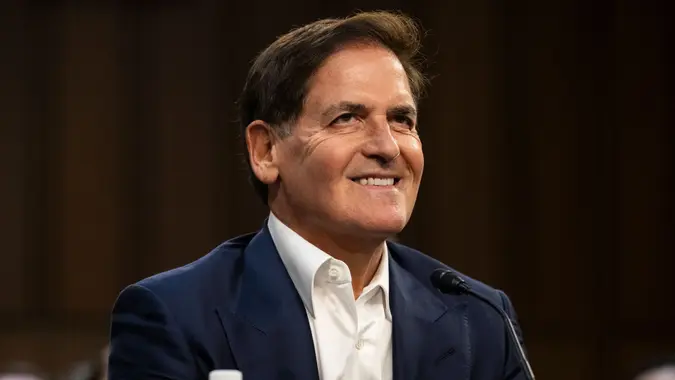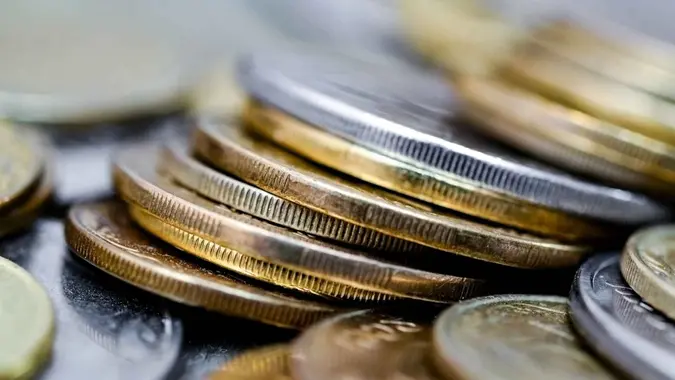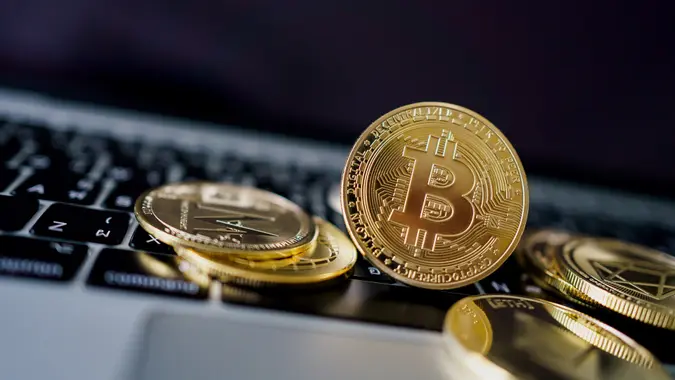5 Economic Shifts To Expect Before 2025 Ends, According to Jaspreet Singh

Commitment to Our Readers
GOBankingRates' editorial team is committed to bringing you unbiased reviews and information. We use data-driven methodologies to evaluate financial products and services - our reviews and ratings are not influenced by advertisers. You can read more about our editorial guidelines and our products and services review methodology.

20 Years
Helping You Live Richer

Reviewed
by Experts

Trusted by
Millions of Readers
A Pew Research Center survey found that only 26% of U.S. adults rated the economy as “good” or “excellent” and just 29% thought the economy would be better off in one year.
From tariffs and inflation to taxes and debt, 2025 has brought along several economic concerns to keep track of. In a YouTube video, financial influencer Jaspreet Singh discussed five economic shifts to expect through 2025 and beyond. Learn how they might affect Americans and the global economy.
The Fed ‘Switch’
Singh explained that the U.S. government borrows funds from various sources to fill the gap between its spending and the tax money collected. The Federal Reserve plays a key role here since it makes decisions about the money supply and interest rates, which impact the economy.
Although the Fed is independent from the government, Singh discussed how President Trump’s requests for rate cuts and calls to remove Federal Reserve members have raised concerns that could affect both the U.S. economy and other countries’ trust in the U.S. dollar. One major shift may be ahead in mid-2026, when Federal Reserve Chair Jerome Powell’s term is up.
“When his term ends, it is pretty much expected that President Trump is going to remove Jerome Powell with somebody who is going to want to cut interest rates aggressively,” Singh said.
Policy Changes
Through most of 2025, the Federal Reserve hadn’t made rate cuts due to job market data and ongoing concerns about tariffs and inflation. However, it recently made 0.25% rate cuts in September and October, a few months after the July meeting indicated some openness to the move.
Singh discussed the effect of rate cut decisions on increased overall spending, which helps strengthen the economy — and the current national debt, which is around $38 trillion, according to the U.S. Treasury.
He explained, “If we see lower interest rates, not only does that mean that people could go out and borrow money for a mortgage or a car cheaper, but what it also means is that the United States government could refinance that debt at a lower interest rate.”
While ongoing rate cuts are good news for investors and can save borrowers money, Singh added that inflation is a risk if people and organizations increase their borrowing as a result.
Global Currency Changes
The U.S. dollar has long served as an important currency worldwide. However, Singh explained that other countries are interested in competing with it, often due to questions over its value and concerns about the risks and costs of dependence.
He discussed moves toward de-dollarization, such as a proposed BRICS payment system and potential currency, rumored to be backed by gold. Singh noted that gold prices usually rise when people feel less confident about the U.S. dollar.
A J.P. Morgan research report suggested that de-dollarization may particularly hurt the U.S. investment markets, though the whole world could experience economic changes.
Tariffs, Taxes and Inflation
Singh discussed the ongoing negotiations and uncertainty about tariffs, which had shaken up the stock market earlier this year. He also brought up the role of these tariffs in helping the government compensate for less money flowing in after recent tax cuts.
“We’ll ultimately see in 12 to 18 months how our tax revenue change when you factor in the One Big Beautiful Bill Act and the tariffs, but it’s expected that the rise in tariffs are not going to fully offset the tax revenue loss from the One Big Beautiful Bill Act,” Singh said.
This could all impact the economy in different ways. On one hand, the tax cuts can benefit many everyday Americans, but tariffs may lead people to spend less money as businesses raise prices to compensate. Singh added that inflation can also become an increasing issue as the U.S. government gets less tax money and needs to take on even more debt.
Debt Stress
Stress from the country’s rising national debt has led to the demand for interest rate cuts and will continue to affect the economy. As Singh also explained, many everyday consumers are finding themselves in similar debt trouble.
According to the Federal Reserve Bank of New York, American households owed $18.39 trillion in Q2 2025. Many are falling behind on debt payments due to rising expenses and stagnated wages, while others are borrowing more to make up for income lost due to recent layoffs. This can also tie back to Americans needing to reduce spending, which can further slow the economy.
 Written by
Written by  Edited by
Edited by 

























